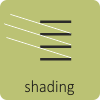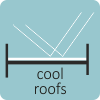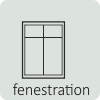Daylighting is a building design strategy to use light from sun. Presence of natural light in an occupied space brings a sense of wellbeing, increases awareness of one’s surrounding and also increases energy saving potential with reduced dependence on artificial light. Appropriate use of windows, skylights, clerestories, and other apertures in the building provide means to harvest daylight.
Remember that, more the sunlight that enters the building, more the heat that needs to be dealt with. Thus, by placing apertures correctly, nature can work with you. Integrating daylighting with artificial lighting can considerably reduce energy consumption, but at the same time may lead to higher air conditioning loads due to heat gain. Thus design consultants and decision makers need to appropriately balance daylight harvesting features and minimize solar heat gains. Hence, daylighting becomes an integral part of a building design strategy from early design phase to lower the energy consumption of a building, imperative to advance NZEB design goals.



















